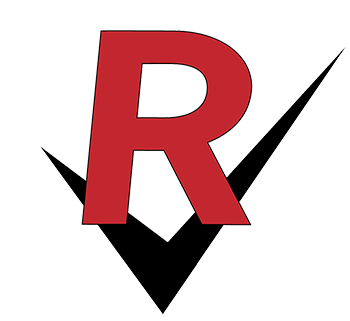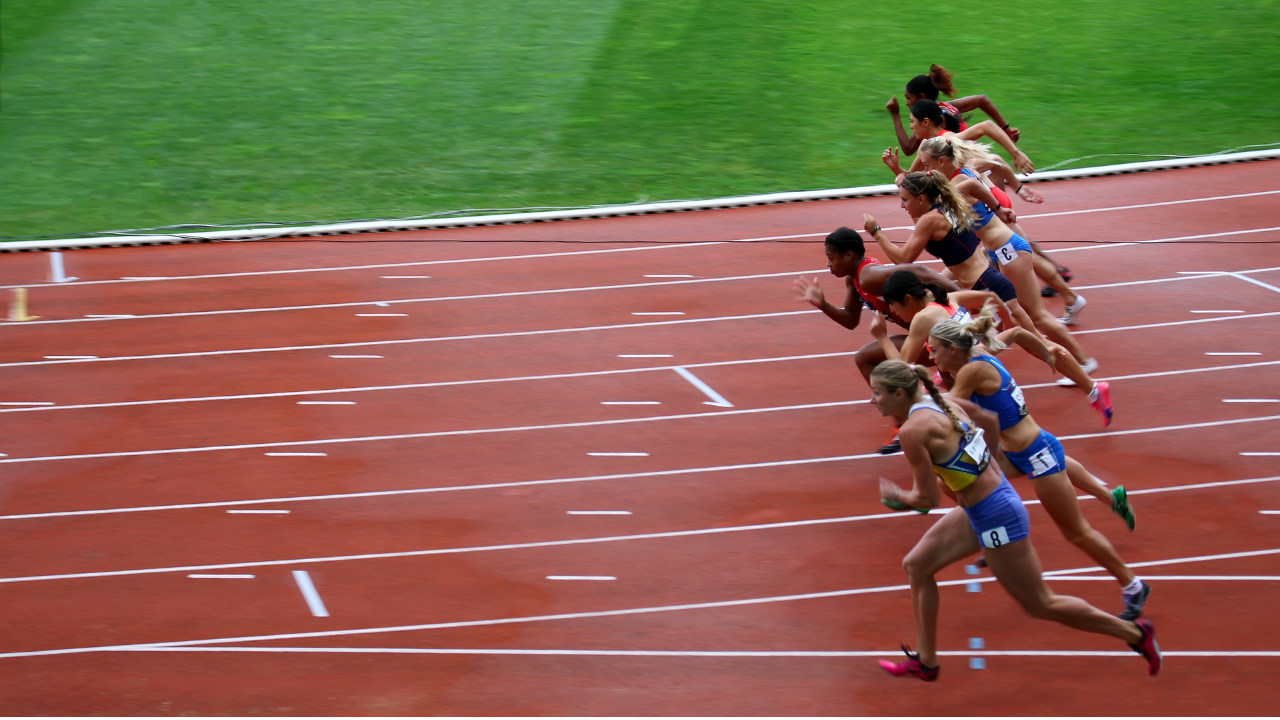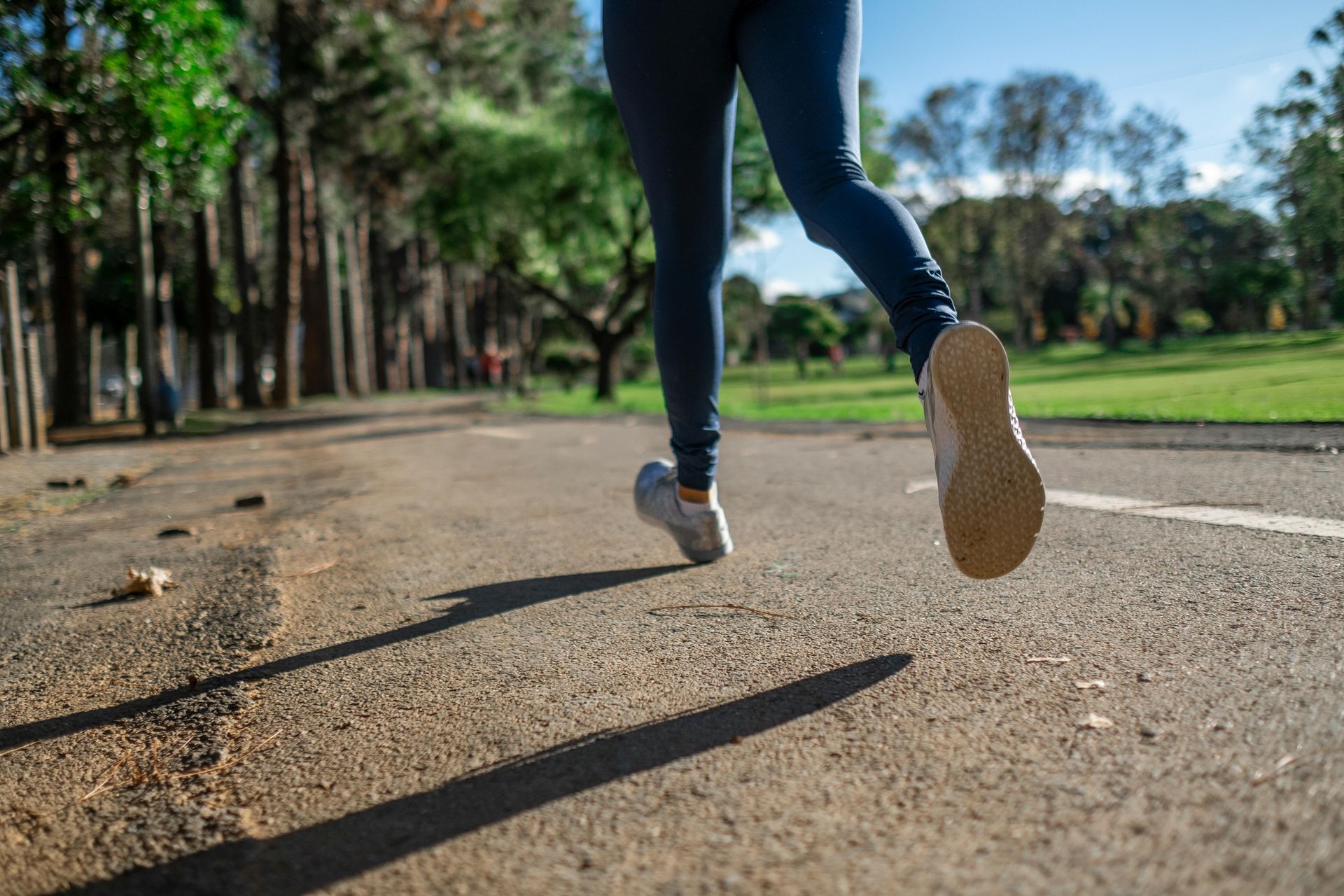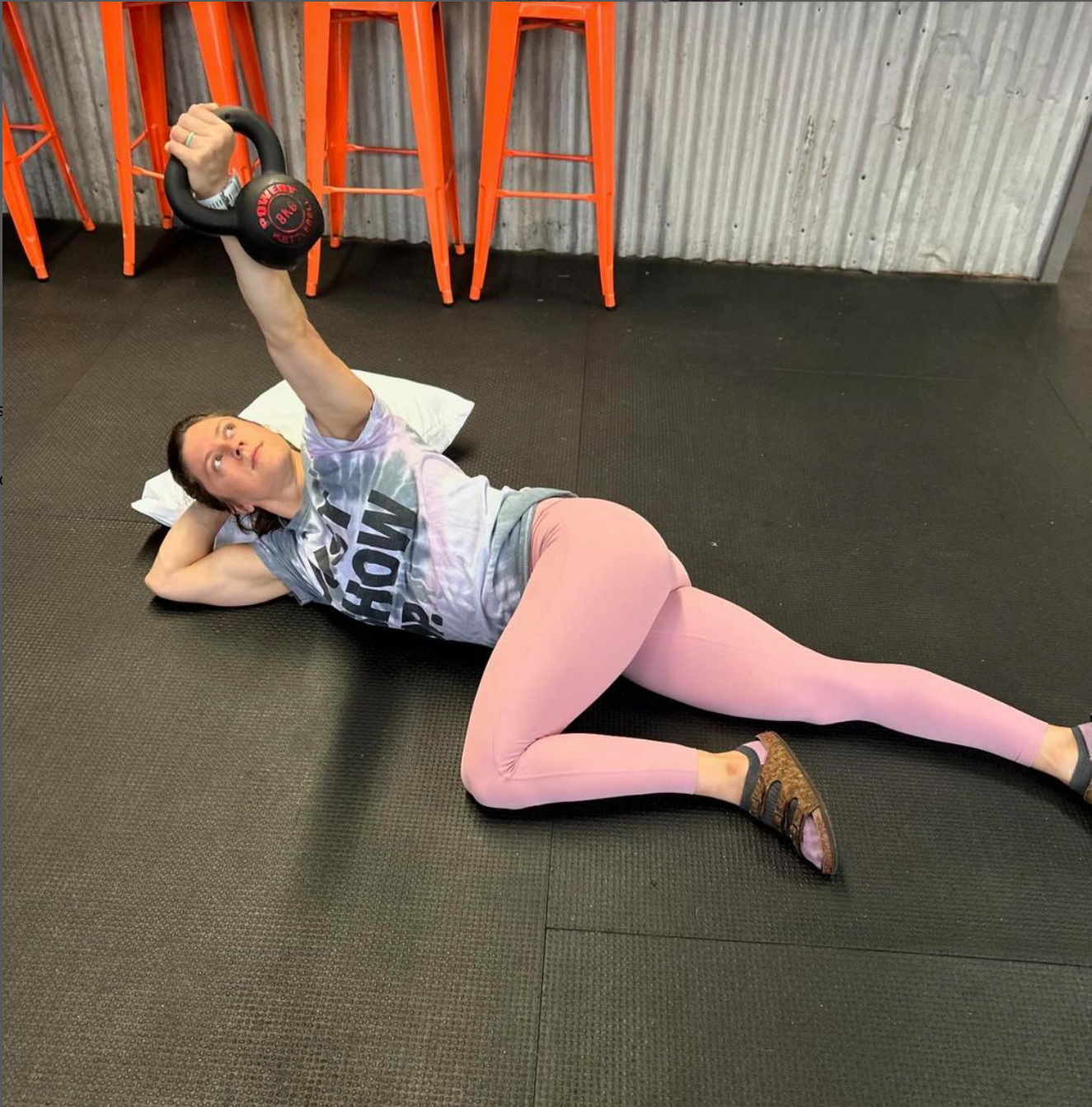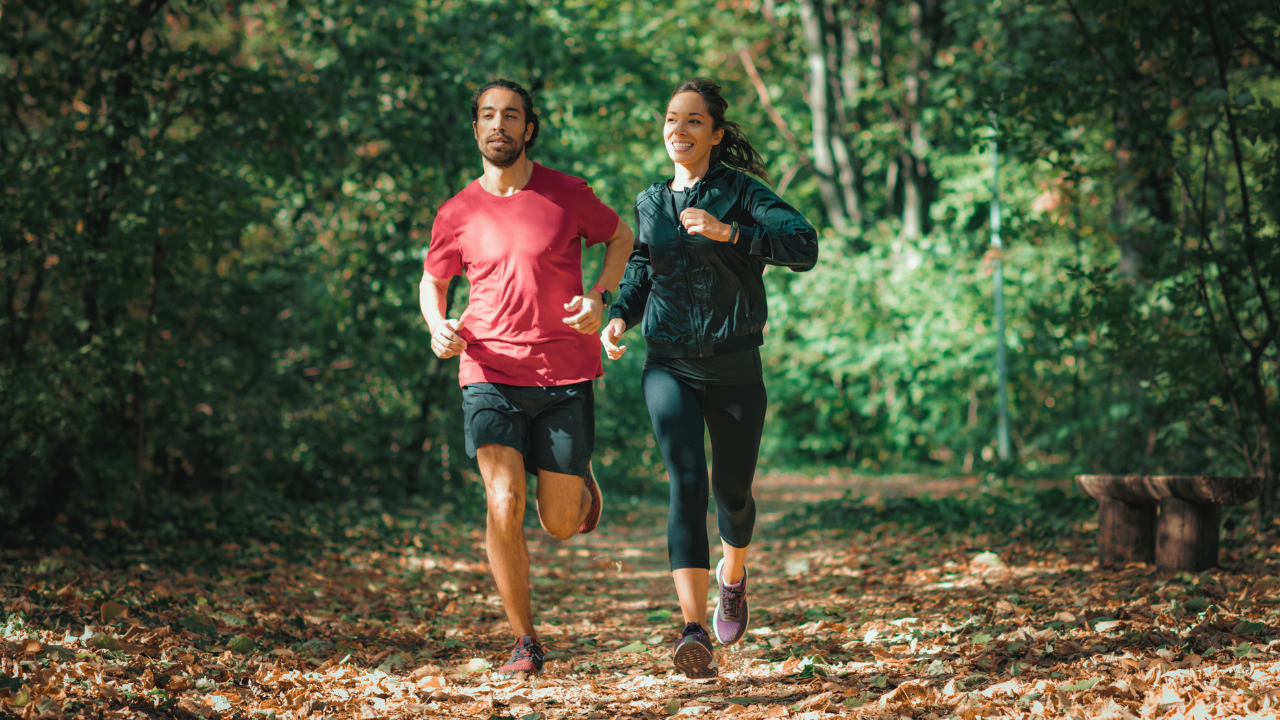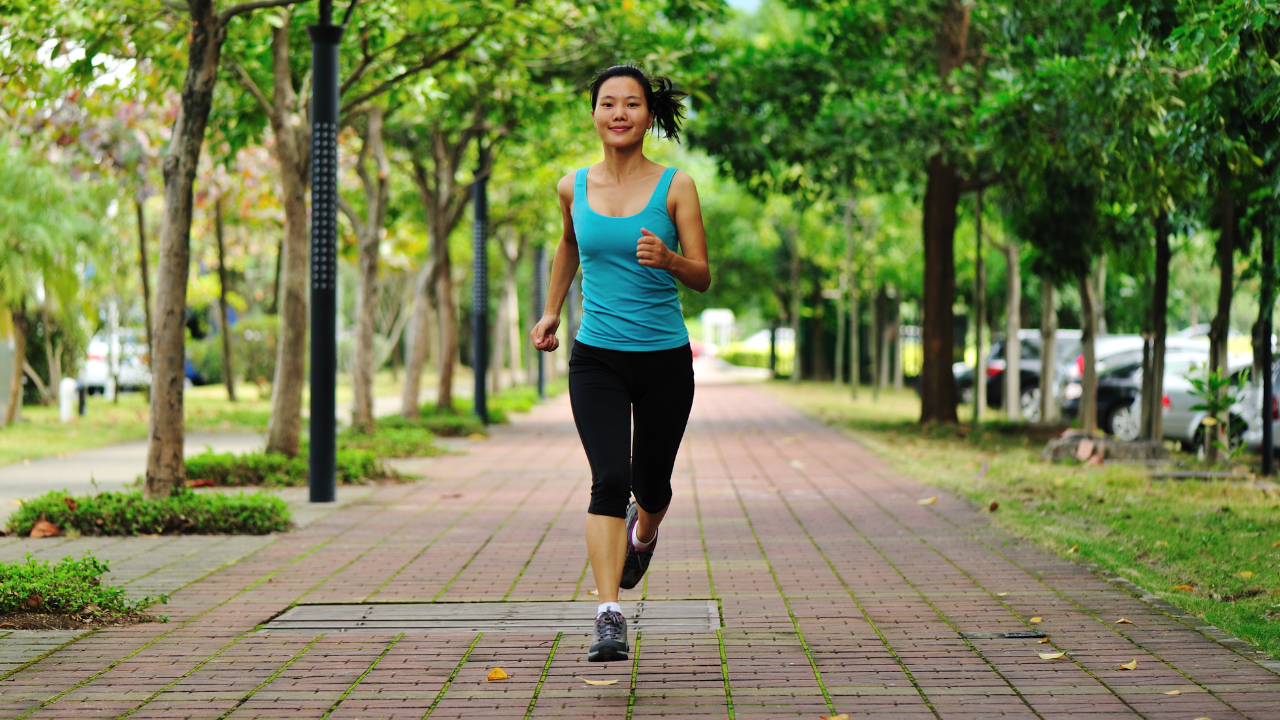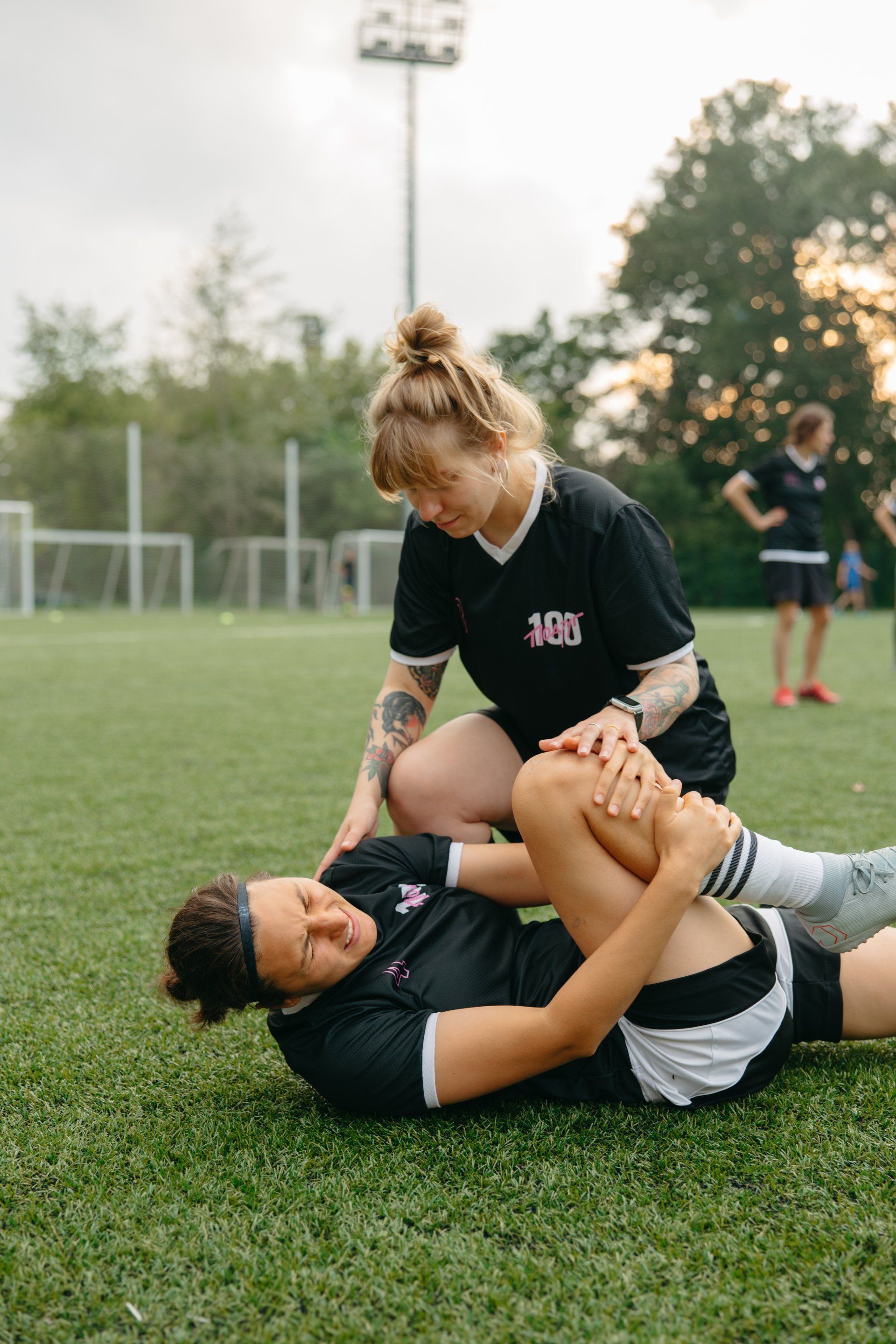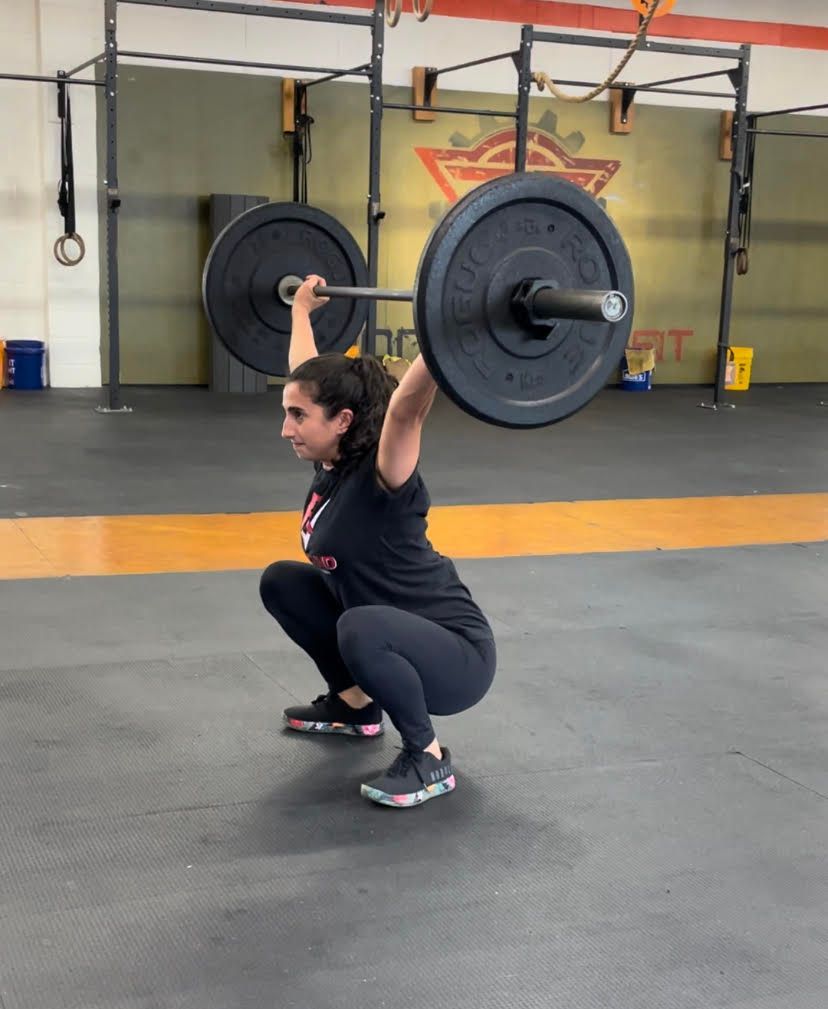An Athlete's Guide to Physical Therapy in Newington, CT
Staying active is part of an athlete's DNA, yet hard training often comes with aches, pains, or full-blown injuries.
That's where physical therapy in Newington, CT steps in. At Rebound Performance PT, we work side-by-side with you.
Whether you are a varsity soccer player, weekend marathoner, or parent chasing personal records, we'll help you to restore movement, reduce pain, and boost performance.
Why Athletes Rely on Physical Therapy in Newington, CT
Common Injuries We See
We frequently help athletes address:
- Knee ligament sprains, especially ACL tears
- Shoulder impingement from overhead sports
- Shin splints and stress fractures in runners
- Lumbar strains linked to lifting or rotational sports
According to the U.S. Centers for Disease Control and Prevention, sports and recreation lead to roughly 8.6 million injuries annually in people aged 5--24. Physical therapy provides a research-backed pathway to recover without unnecessary downtime.
Evidence-Based Rehab Principles
We base every plan on current literature from the American Physical Therapy Association (APTA) and the National Strength and Conditioning Association. You can expect:
- Objective testing to locate mobility or strength deficits
- Graded loading that respects tissue healing timelines
- Neuromuscular re-education that restores sport-specific patterns
By combining these pillars, we cut re-injury risk and accelerate your safe return to competition.
Our Approach at Rebound Performance PT
One-on-One Evaluation & Goal Setting
During your first visit, we schedule a full hour of undivided attention. We analyze your injury history, training volume, and personal goals, then design a customized roadmap.
Get to know our team of clinicians on the About Us page to see how our backgrounds in athletics shape each session.
Integrating Strength & Conditioning
Unlike generic rehab, we blend physical therapy with targeted strength and conditioning. That means you leave each appointment not only pain-free but also stronger and more resilient.
Our cash-based model allows creative programming without insurance constraints, giving us the freedom to focus on what truly works for you.
Key Techniques You May Encounter
Manual Therapy & Dry Needling
Hands-on joint mobilizations, soft-tissue release, and trigger-point dry needling can quickly reduce pain and improve motion. Peer-reviewed studies show that pairing manual techniques with exercise yields greater functional gains than exercise alone.
Blood Flow Restriction & Return-to-Sport Testing
For athletes sidelined after surgery, blood flow restriction (BFR) training produces muscle strength improvements even with light loads--a critical advantage during early rehab.
When you're ready, our return-to-sport testing benchmarks hop distance, speed, and agility, ensuring you meet objective criteria before hitting the field. Dive deeper in our ACL rehabilitation program to see how we apply these metrics.
Sport-Specific Rehabilitation Programs
Physical Therapy for Runners
Running creates repetitive stress patterns that can lead to overuse injuries like IT band syndrome, plantar fasciitis, and patellofemoral pain syndrome.
Our physical therapy for runners addresses biomechanical inefficiencies while building the strength and mobility foundation necessary for injury-free miles.
We incorporate gait analysis using video feedback to identify stride abnormalities, hip drop patterns, and foot strike mechanics. Combined with targeted strengthening of the posterior chain and core stability work, runners learn to move more efficiently while reducing injury risk.
Our approach aligns with the principles outlined in our website, emphasizing the importance of mobility work alongside strength training.
CrossFit Therapy Services
As noted, we've observed that most CrossFit injuries stem from inefficient movement patterns, increased workload, or technical errors rather than single traumatic events.
Our CrossFit therapy program focuses on movement quality before intensity, ensuring athletes can perform complex movements like Olympic lifts, gymnastics skills, and metabolic conditioning safely.
We address common CrossFit injuries including shoulder dysfunction from overhead movements, low back pain from improper lifting mechanics, and patellofemoral issues from high-volume squatting and jumping. Our therapists work closely with local CrossFit coaches to ensure seamless transitions between rehabilitation and training environments.
Physical Therapy for School Athletes
Young athletes face unique challenges as their bodies continue developing while managing academic stress and competitive pressures.
Our physical therapy for school athletes recognizes that adolescent bones, muscles, and growth plates require specialized attention. We commonly treat growth-related conditions like Osgood-Schlatter disease, Sever's disease, and stress fractures that occur when training loads exceed tissue adaptation capacity.
Our approach emphasizes education for both athletes and parents about proper training progression, the importance of rest and recovery, and recognizing early warning signs of overuse injuries.
We coordinate care with school athletic trainers, coaches, and parents to create supportive environments that prioritize long-term athletic development over short-term performance gains.
Baseball-Specific Rehabilitation
Building on our expertise regarding baseball injury recovery, we understand the complex movement patterns required for throwing, hitting, and fielding. Baseball players frequently present with shoulder impingement, elbow injuries like Little League elbow or Tommy John injuries, and hip mobility restrictions that affect both throwing velocity and batting mechanics.
Our baseball rehabilitation program emphasizes kinetic chain efficiency, recognizing that throwing power originates from the ground up through the legs, core, and into the arm. We utilize sport-specific exercises that mirror baseball movements while progressively loading healing tissues.
Return-to-throwing protocols follow evidence-based guidelines that gradually increase throwing distance, intensity, and volume.
Understanding the Injury Life Cycle
Acute Injury Management
As discussed in our blog content about the injury life cycle, understanding where you are in the healing process helps set realistic expectations and treatment goals.
Acute injuries require immediate attention to control inflammation, protect healing tissues, and maintain range of motion. We utilize the latest evidence in early mobilization protocols while respecting tissue healing timelines.
During the acute phase, we focus on pain management through manual therapy techniques, appropriate exercise prescription, and education about activity modification.
Our goal is to prevent secondary complications like muscle atrophy, joint stiffness, and compensatory movement patterns that can prolong recovery.
Subacute Recovery Phase
The subacute phase represents a critical window where proper rehabilitation can significantly influence long-term outcomes.
We progressively introduce strengthening exercises, begin addressing movement dysfunctions, and start preparing the body for return to activity demands. This phase requires careful monitoring of tissue response to ensure we're pushing recovery forward without causing setbacks.
We emphasize patient education during this phase, teaching individuals how to monitor their symptoms and adjust activity levels accordingly.
Return to Activity Planning
The final phase of rehabilitation focuses on sport-specific training and injury prevention strategies. We don't simply aim to return athletes to their previous activity level; we strive to make them more resilient and better prepared than before their injury.
This includes addressing any underlying movement dysfunctions that may have contributed to the initial injury.
Exercising with Pain: A Balanced Approach
When to Push Through vs. When to Rest
Not all pain signals tissue damage, and complete rest isn't always the answer.
We teach athletes and active individuals how to differentiate between muscle fatigue, delayed onset muscle soreness, and pain that indicates potential injury.
We utilize pain monitoring scales and movement assessments to guide exercise modifications. This approach allows individuals to maintain fitness and momentum in their recovery while respecting their body's healing needs.
Our therapists provide clear guidelines about when to continue, when to modify, and when to seek immediate attention.
Progressive Loading Strategies
Modern rehabilitation science emphasizes the importance of appropriate loading to stimulate tissue healing and adaptation.
We carefully progress exercise intensity, volume, and complexity based on individual response and healing timelines. This approach helps restore confidence while building physical capacity.
Our progressive loading protocols are sport-specific and consider the unique demands each athlete will face upon return to their activity. We simulate these demands in controlled environments before clearing athletes for unrestricted participation.
Preventing Nagging Injuries
Movement Quality Assessment
We understand that persistent problems often stem from underlying movement dysfunctions rather than acute tissue damage.
Our comprehensive movement assessments identify compensatory patterns, muscle imbalances, and mobility restrictions that predispose individuals to overuse injuries.
We utilize standardized screening tools combined with sport-specific movement analysis to create targeted intervention strategies. This proactive approach addresses problems before they become painful and limiting.
Load Management Education
Many nagging injuries result from training errors rather than traumatic events. We educate athletes about proper training progression, the importance of recovery periods, and how to monitor training loads relative to their body's adaptation capacity.
This education empowers individuals to make informed decisions about their training and recognize early warning signs.
Tissue Quality and Mobility Work
Maintaining optimal tissue quality through regular mobility work, proper warm-up protocols, and recovery strategies significantly reduces injury risk.
We teach evidence-based techniques for self-mobilization, foam rolling, and targeted stretching that individuals can incorporate into their daily routines.
Golf-Specific Considerations
Hip Rotation and Power Generation
Golf requires significant rotational mobility and stability throughout the kinetic chain. Many golfers develop low back pain, hip restrictions, and shoulder problems due to repetitive rotational stresses combined with prolonged periods of sitting.
Our golf-specific rehabilitation program addresses these common issues while improving power generation and consistency. We focus on hip mobility, thoracic spine rotation, and core stability to create efficient golf swings that reduce injury risk.
Seasonal Preparation
Golf season preparation involves gradually conditioning the body for increased playing frequency and intensity after potentially sedentary winter months.
We help golfers develop off-season conditioning programs and in-season maintenance routines that support consistent performance.
Preventing Re-Injury After Rehab
Movement Screening
Before graduation, we guide you through the Functional Movement Screen and Y-Balance Test. These tools highlight asymmetries that could trigger future setbacks. We share your scores and demonstrate corrective drills you can keep in your warm-up routine.
Building Long-Term Resilience
Consistency beats intensity. We coach you on:
- Progressive loading calendars
- Sleep and nutrition basics that influence tissue recovery
- Monitoring readiness with simple heart-rate variability apps
For more strategies, explore our latest blog article on running mechanics in the Rebound PT Blog.
Getting Started with Physical Therapy in Newington, CT
What to Expect at Your First Session
- Wear athletic clothes you can move in.
- Bring any imaging reports so we can interpret them together.
- Plan to practice home exercises; we film each drill so you have a reference.
Scheduling & Insurance Questions
We operate as an out-of-network provider to maximize one-on-one care.
You receive a detailed invoice (superbill) that you may submit to your insurance for potential reimbursement. Flexible payment plans make high-quality care accessible for students and families alike.
Our convenient location at 193 Pascone Place in Newington provides easy access for athletes throughout central Connecticut.
We maintain extended hours Monday through Thursday from 8am to 8pm, Friday from 8am to 5pm, and Saturday from 8am to 1pm to accommodate busy training and competition schedules.
Ready to Rebound?
If nagging pain is keeping you from the court, track, or gym, let's tackle it together. Call us at (203) 601-7446 or book online to start your personalized program of physical therapy in Newington, CT today. Our team of experienced clinicians is ready to help you not just return to your sport, but excel at it with greater confidence and resilience than ever before.
